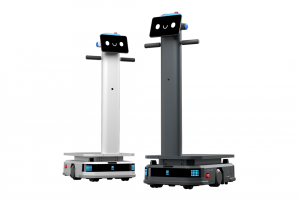Google Tries TV Again & Casts That Won’t Get Itchy – SiliconANGLE News Roundup
Another Market for Google to Dominate…
The race to internet television is getting closer, with Google becoming the latest company to join in on the competition. If launched, Google’s Internet-TV service could have major implications for the traditional TV ecosystem.
For Google, the road ahead won’t be easy. They’ll be creating new competition for pay-TV operators, who are already struggling to retain subscribers, thanks to the increased use of online providers like Hulu, Netflix and Amazon.
Google hopes to break through the competition by simply offering the best of both worlds. Their latest efforts are aimed at allowing customers to flip through channels, just as they would on cable, while also allowing on-demand programming, like Hulu.
The biggest obstacle at this point is convincing media companies to license their content to be used in this manner. Doing so could undermine the lucrative arrangements that media companies have had with distributors for decades. This is actually the second time Google has attempted to launch internet TV, but earlier talks were abandoned due to licensing difficulties. The television environment has changed since then, and it’s believed that Google has a far better chance of success this time around.
Sand-proof Speakers
It’s summertime, and millions of vacationers are taking their electronics to the beach. Unfortunately, sand has a tendency to destroy perfectly good equipment. There’s some tough technology coming out of Panasonic that will be able to withstand the Summer heat, sand at the beach, and much more.
Called the SC-NT10, Panasonic’s new wireless speakers are “quad proof,” which means the little speakers can withstand splashes of water, intense heat, freezing cold, and even accidental drops from several feet high.
The small form factor helps with durability, but it also means that the four-watt speakers should be able to provide up to eight hours of battery life. The speakers can be played using either standard audio jacks or with bluetooth enabled devices. Panasonic is taking preorders now, and it’ll only set you back $100.
Maps Just Get Better and Better
![]() A revamped version of Google Maps for iOS has launched, opening up support for the iPad, indoor maps, and even some new navigation features.
A revamped version of Google Maps for iOS has launched, opening up support for the iPad, indoor maps, and even some new navigation features.
Just like with the recent update for Android, the enhanced navigation now adds incident reports and live traffic updates to your route. A new Explore function should come in handy, as it lets users browse popular places in the area, such as restaurants and shops.
The updated Google Maps app is now integrated with Zagat ratings, and will point users to nearby deals, courtesy of Google Offers.
Most impressively, the iOS update includes indoor mapping functionality for malls, transit stations, and airports. Once Google helps you navigate to the local mall, it can help you find your way inside the mall. No more wandering around, looking for the food court.
The update is now live in the Apple App store.
Who Hold’s Back The Electric Car Now?
One of the biggest problems with electric vehicles is that they take too long to charge.
Until recently, a Tesla Model S required five hours at a charging station just to charge halfway.
In an effort to make electric cars more practical, Tesla Motors has been working on solutions to reduce charging time. Last September, it unveiled a network of super-charging stations that reduced charging times to thirty minutes. Tesla intends to cut the time it takes to fully charge a battery down to as little as five minutes, which isn’t much longer than the time it takes to fill a gas tank.
Existing charging stations and the electrical grid will require some improvements for the super-chargers, but new stations are being built across the country in preparation.
Tesla plans to introduce several new electric cars in the $30,000-$35,000 range in the next few years. It’s believed that the combination of fast charging stations and affordable electric cars may finally result in the widespread usage of renewable energy vehicles.
It All Comes Tumbl’ng Down…
![]() Last week, a new Tumblr update hit iOS devices, and the company is pushing out yet another update this week, which comes with what Yahoo is calling “a very important security update.”
Last week, a new Tumblr update hit iOS devices, and the company is pushing out yet another update this week, which comes with what Yahoo is calling “a very important security update.”
Tumblr is asking users to download the update immediately, and change their passwords on the service, as well as any other services which share the same passphrase.
According to Tumblr, the action was taken after they were notified of a vulnerability on its iOS app. They took immediate steps to correct the situation, and as of now, there’s been no reports of compromised accounts due to the vulnerability.
Italians Still Design Stuff Outside of China?
An Italian designer company named Glass-up is officially launching a crowdfunding campaign to build their own lightweight take on smart glasses, similar to Google’s Glass.
Though they will be a stripped-down version of Google’s feature set, Glassup takes the display aspect a bit further, moving it to the center of your field of vision. The idea is to make data more apparent to users, such as putting notifications on someone’s tie when you’re speaking to them, rather than at the corner of your vision like with Glass.
On the other hand, missing functions such as the lack of a camera and a black and white display puts Google’s wearable computer miles ahead as far as features go. While Glassup and Google’s Glass are likely to draw many comparisons, the lack of tools makes Glassup more of a competitor to devices like the Pebble smartwatch.
Currently, the smart-glasses are slated to ship next Spring for about $400, where it is likely to be a popular, more affordable alternative to Google’s Glass.
Cost of Printed Cast: $.05, Your Hospital Bill: $2,499
In the future, patients with broken bones may get their casts straight from the printer, using 3D technology.
The solution was created by professional designer, Jake Evill, and his new casts could do away with the bulky and awkward casts that we use today.
Called the Cortex cast, the new brace is customized for the individual. It follows the contours of the arm, rather than simply encasing it in plaster. Though it’s still just in the concept phase, Evill’s Cortex will basically serve as a localized exoskeleton that’s lighter than plaster, and is washable, ventilated and even recyclable.
The idea is that while patients are getting their x-rays, they will also have the injured limb 3D scanned. A computer would then determine the optimal structure of the cast, and send the plans to a 3D printer. Denser materials can be focused on the fractured area to provide more support, and more flexible materials can be used around joints to give the patient more mobility in a cast than ever before.
Once Evill determines the best material to use, he intends to work with hospitals to fully test out the prototype.
And that’s all for today’s news. To follow these and more stories, you can watch us live each morning at 8:30 Central time on NewsDesk with Kristin Feledy.
photo credit: Shekhar_Sahu via photopin cc
photo credit: Steven Vance via photopin cc
photo credit: Khánh Hmoong via photopin cc
photo credit: RaGardner4 via photopin cc
A message from John Furrier, co-founder of SiliconANGLE:
Your vote of support is important to us and it helps us keep the content FREE.
One click below supports our mission to provide free, deep, and relevant content.
Join our community on YouTube
Join the community that includes more than 15,000 #CubeAlumni experts, including Amazon.com CEO Andy Jassy, Dell Technologies founder and CEO Michael Dell, Intel CEO Pat Gelsinger, and many more luminaries and experts.
THANK YOU













